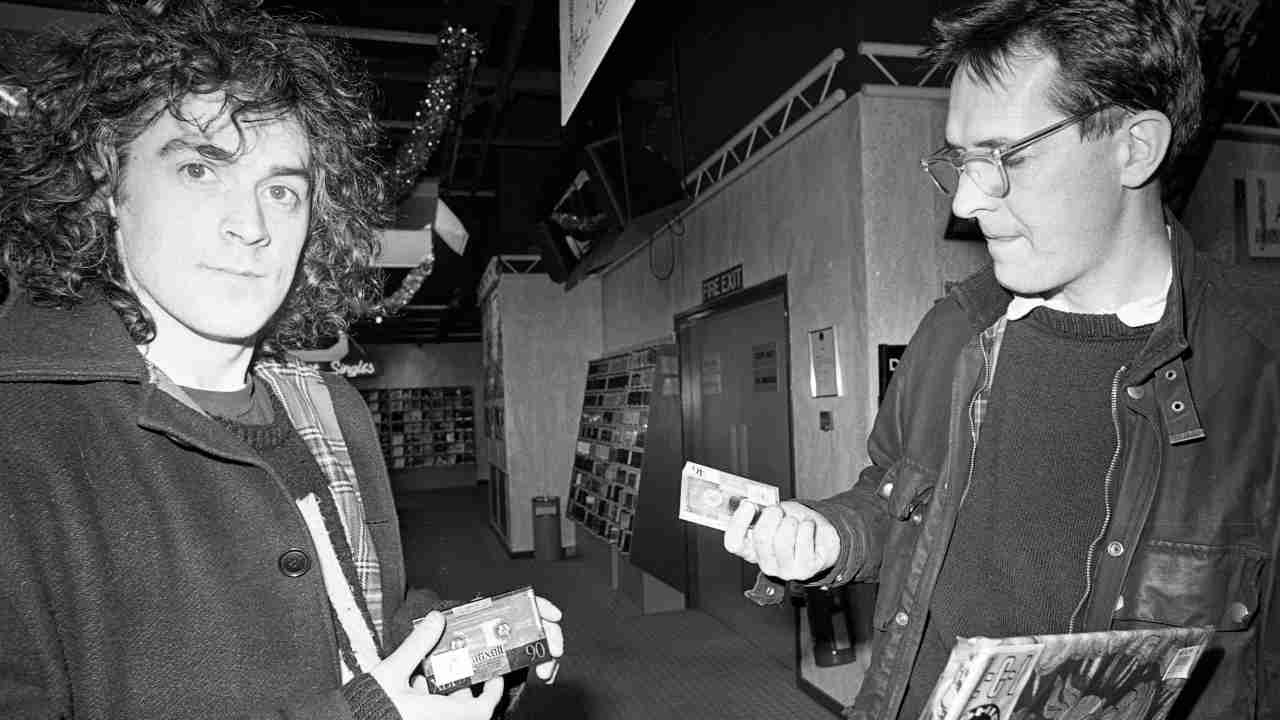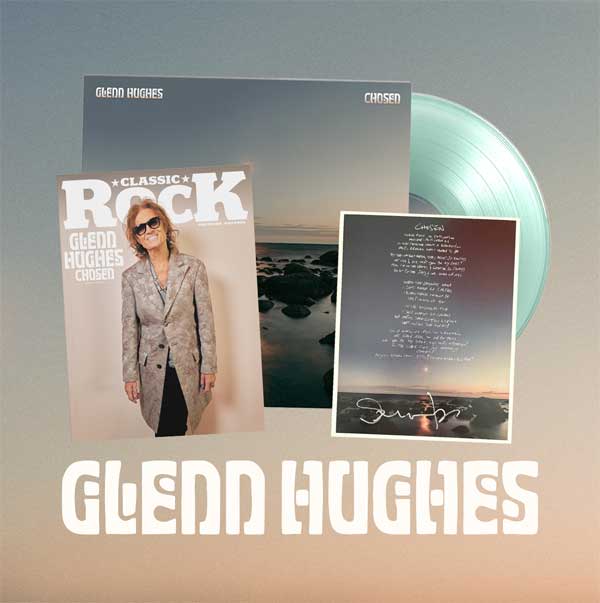Glenn Hughes had all of it within the Seventies after which got here very near throwing every thing away within the Nineteen Eighties.
Plucked from livewire rockers Trapeze to affix Deep Purple’s Mk III in 1973, bassist/vocalist Hughes and fellow new boy David Coverdale helped revitalise Purple after the departure of unique singer Ian Gillan and bassist Roger Glover.
Hughes made three good albums with the band – 1974’s Burn and Stormbringer, plus 1975’s Come Style The Band. However on the similar time, he had fallen into critical drug habit.
“When anybody has success, there will probably be folks round providing them stuff – jewelry, watches, women, medicine,” Hughes tells Traditional Rock. “Once I joined Purple I used to be given all types of medicine, capsules, issues like that. I’d flush them down the bathroom or simply go away them in my pocket and never do something with them.
“After about six months in Purple, I began to go: ‘What’s these items about, cocaine?’ One evening, I discovered one thing in my pocket. I used to be alone in my room, and I sniffed a few of it. I went: ‘Oh, that is enjoyable. That is making me glad’.
“Slowly however absolutely I began turning into addicted. I believed: ‘I’m younger, isn’t all people snorting cocaine off of strippers’ bums?’”
After Purple’s cut up in 1976, Hughes’ habit worsened. By the Nineteen Eighties, he was in a nasty manner, strung out on cocaine and, later, crack.
His way of life took priority over music – he managed one album with guitarist Pat Thrall underneath the title Hughes/Thrall, collaborated with Irish guitarist Gary Moore on the latter’s 1985 album Run For Cowl and briefly joined Black Sabbath for 1986’s Seventh Star.
“Music was getting in the way in which of me getting excessive,” Hughes tells Traditional Rock. “Getting excessive was the primary factor for me. I attempted to cease however I couldn’t. I used to be in hassle.”
If issues had been dangerous for Hughes musically, personally they had been disastrous – and doubtlessly deadly. His drug consumption was wreaking critical harm to his physique, and he got here near dying after setting fireplace to his kitchen with a fryer.
By the tip of the Nineteen Eighties, the longer term appeared bleak for this one-time famous person. However salvation was across the nook in an unlikely type.
Invoice Drummond and Jimmy Cauty had been a pair of maverick digital musicians who had notched up a UK #1 hit with their novelty 1988 Physician Who-themed single Doctorin’ The Tardis, launched underneath the title The Timelords.
By 1991, the pair had been working underneath the deal with The KLF, and had pivoted in the direction of extra critical types of digital music.
The pair had been searching for somebody to sing on an up to date model of a trance music they’d launched just a few years earlier titled What Time Is Love?.
The highly effective new model, renamed America: What Time Is Love?, reinvented the unique as a full-on techno-rock anthem that includes a pattern of the riff from Motörhead’s Ace Of Spades.
All they wanted was somebody with a screaming voice to match the music’s beefed up sound. Enter Glenn Hughes.
“We had been initially alleged to be doing the music with Axl Rose of Weapons N’ Roses, however he by no means turned as much as the session,” The KLF’s Invoice Drummond tod Joel McIver, co-author of Hughes’ 2011 autobiography Deep Purple And Past: Scenes From The Life Of A Rock Star. “I can’t keep in mind who the fuck prompt Glenn, however as quickly as they did I mentioned, ‘What, that man who I noticed fronting Trapeze in 1971? Nice thought!’”

“We received a name from somebody within the KLF’s camp – they had been searching for me or Roger Daltrey to sing What Time Is Love?,” Hughes tells Traditional Rock. “I went all the way down to the studio to satisfy the 2 KLF guys, and inside an hour I’d sung what you hear on the music.”
Drummond was impressed by Hughes’ professionalism.
“When he got here in I assumed he’d be jaded and I questioned if he’d take the piss, as a result of we’d labored with individuals who’d given us all types of angle – however as quickly as he went into the vocal sales space, he was completely and totally beautiful,” he informed McIver. “He was so filled with power.”
Little did Drummond know that Hughes was nonetheless within the grip of his dangerous habits.
“I don’t suppose they knew something about my drug habit within the studio,”’ the singer tells Traditional Rock. “I by no means confirmed up excessive. However I figured: ‘Holy shit, this might be my pathway to a unique profession – one thing unusual however fantastic. Possibly that is the chance for me to check out my habit.’”
No matter the state he was in, the completed music was the right collision between techno and rock, with Hughes giving it his all on the music’s refrain and providing up some ecstatic screams.
It was accompanied by a lavish video, filmed at London’s Pinewood Studios, which discovered Hughes and the prolonged KLF collective on a Viking-style boat being lashed by rain and stormy waves.
“They requested me to be within the video,” remembers Hughes. “I wasn’t ingesting or on medicine that day, which was in all probability a superb factor cos it was actually arduous work. However I used to be in a nasty manner.”
“He was good and under no circumstances fragile, as a result of the video shoot was an ordeal, with tons of chilly water flying all over the place and everybody getting soaked,” The KLF’s Jimmy Cauty informed Joel McIver. “You may’t be fragile in that scenario.”

America: What Time Is Love? was launched as a single within the UK in February 1992 and reached No.4. The singer was credited as ‘The Voice Of Rock’ – a nickname he’d embrace in subsequent years.
It was essentially the most profitable factor Hughes had been in because the days of Deep Purple. However extra importantly, recording the music satisfied him that it was time to wash up.
“I very clearly knew that I had an issue,” Hughes tells Traditional Rock. “Individuals had been so pissed off with me, however they had been praying for me. I made a decision once I received house to see if I wanted to enter the Betty Ford Centre.”
Hughes did certainly verify into the Betty Ford Clinic in January 1992, although not earlier than he suffered a coronary heart assault on Christmas Day after one final crack binge.
Nor did sobriety take immediately. Hughes says he had “4 or 5 relapses” earlier than kicking alcohol and medicines as soon as and for all in 1997.
Whereas the success of America: What Time Is Love? didn’t lead on to Hughes getting clear, he credit it with setting him on the trail to sobriety.
“Working with the fellows in The KLF was an unimaginable alternative for me to get observed once more after being out of the image for therefore lengthy,” he says. “It gave me confidence. I owe them rather a lot.”
Traditional Rock has teamed up with Glenn Hughes for a particular ‘bundle’ version of his new album, Chosen, that includes an unique coke-bottle clear vinyl model of the LP and the model new difficulty of Traditional Rock journal that includes the singer on the quilt with an intensive, career-spanning interview inside. Order it on-line right here and have it delivered straight to your door.


